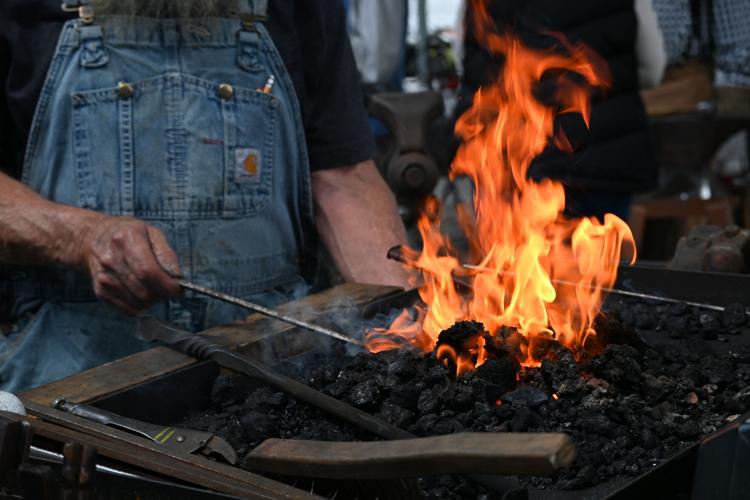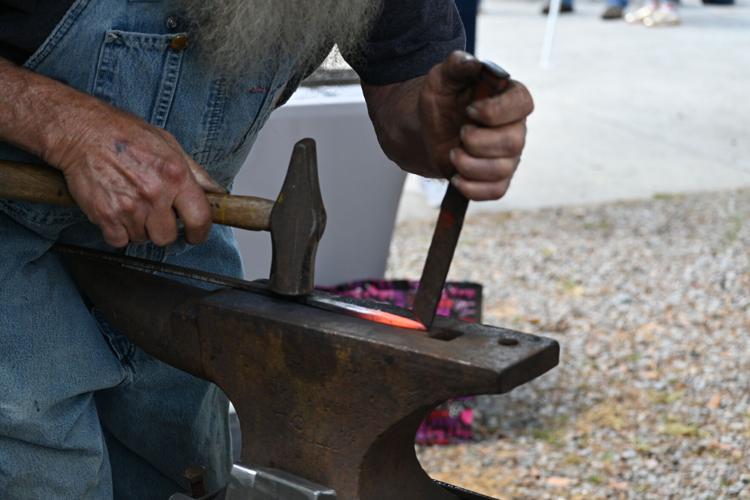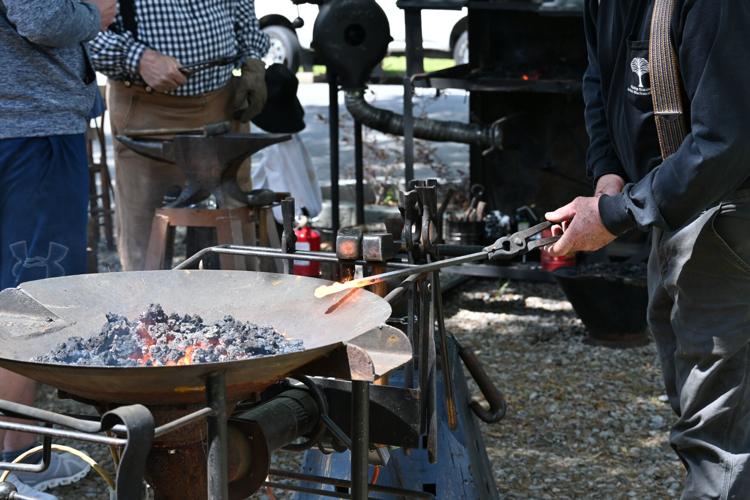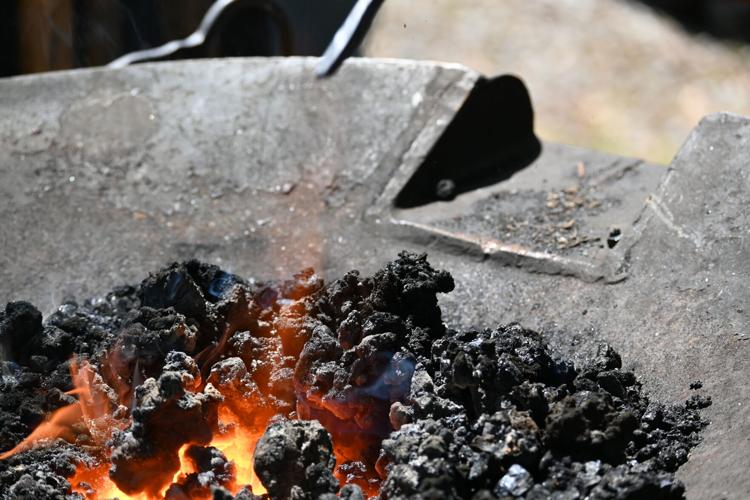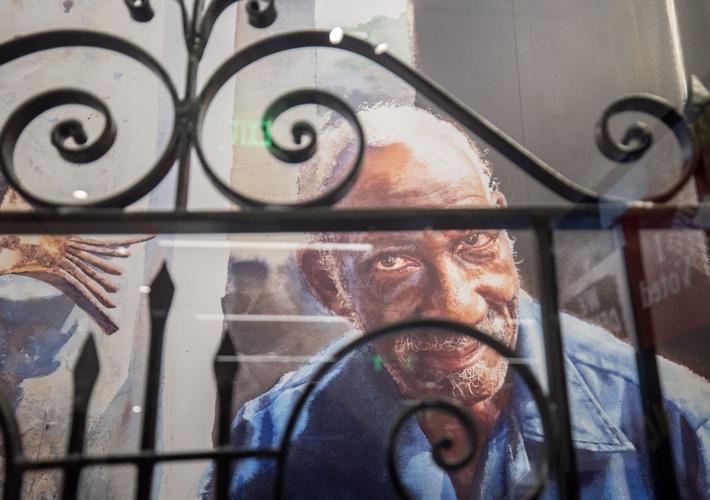COLUMBIA — On a Saturday in April, David Bush was working over a portable coal-fired forge outside the Olympia Mill Village Museum. The coals burned hot. Orange, yellow and blue flames licked towards the sunny springtime sky. The Little Mountain blacksmith stared into the source of his trade.
"Anybody who doesn't like staring into a fire is a little too civilized for me," Bush quipped.
Blacksmiths like Bush are often drawn to the ancient trade through the flames, then the white-hot burn of steel made malleable and the ringing strikes of hammer to anvil.
And while the tradesman of yore have been all but replaced by machinery and technology, blacksmithing is still very much alive in South Carolina, and the tools of the trade are passed down and around through the Philip Simmons Artist Blacksmith Guild.

Blacksmith Tony Etheridge shapes a heated steel piece during a demonstration at the Olympia Mill Village Museum in Columbia on Saturday, April 12, 2025.
The art of blacksmithing
Blacksmith artists' touches are all over the state, from the intricate wrought-iron gates by blacksmithing legend Philip Simmons in Charleston to front porch detailing seen in neighborhoods across Columbia.
Artists like Bush, who worked with steel his whole life and blacksmiths in his retirement, typically stick to items such as trellises, yard ornaments, tools and jewelry, among other items.
The process is simple: An artist gets their forge going, typically using coal and an air-flow device to fan the flames; they heat their metal to the point of flexibility, but not fragility; then they move to a work station to hammer, edge or shape their metal.
And all the tools blacksmiths use, they typically make themselves, according to Jason Jaco, who uses a 1950s garage his grandfather built on Texas Street as his blacksmithing studio.
Jaco said blacksmithing isn't about exact temperatures or sciences, it's half trial-and-error, half instinct. For example, he likes to work with metal heated to "a yellow, almost white heat."

A sample of blacksmith Philip Simmons' ironwork, with a copy of a watercolor portrait of him made by local artist Mary Whyte, inside the International African American Museum on April 28, 2023, in Charleston.
Jaco and Bush are both members of the Philip Simmons Artist Blacksmith Guild, which formed in the 1990s and has about 150 members statewide. Named for the master blacksmith who is known as a "poet of ironwork," the guild is a member-funded organization aimed at promoting, educating and providing people with the tools and knowledge to blacksmith.
While they have between 50 and 70 members attend the quarterly meetings, Bush and Jaco both said a recent TV show has led to a huge spike in blacksmithing interest: "Forged in Fire."
Jaco jokingly said the show has been a blessing and a curse. It's gotten a lot of folks interested in the 3,500-year-old technique, but it's also made folks think it's something you can pick up easily.

Members of S.C.'s Philip Simmons Blacksmith Guild host demonstrations and live music at Columbia's Olympia Mill Village Museum Saturday, April 12, 2025.
"It's one of the best and worst things that's happened to blacksmithing," Jaco said.
But for artists like Bush and Jaco, blacksmithing isn't a passing trend or a side hobby. It's a way to beat out the frustrations of the day — Jaco works in IT and is usually on the receiving end of disgruntled office workers' ire. And they can give back to others — Bush once made a handrail for his disabled neighbor.
It's also a way to connect with the primal aspects of our being: fire, metal and flame.

